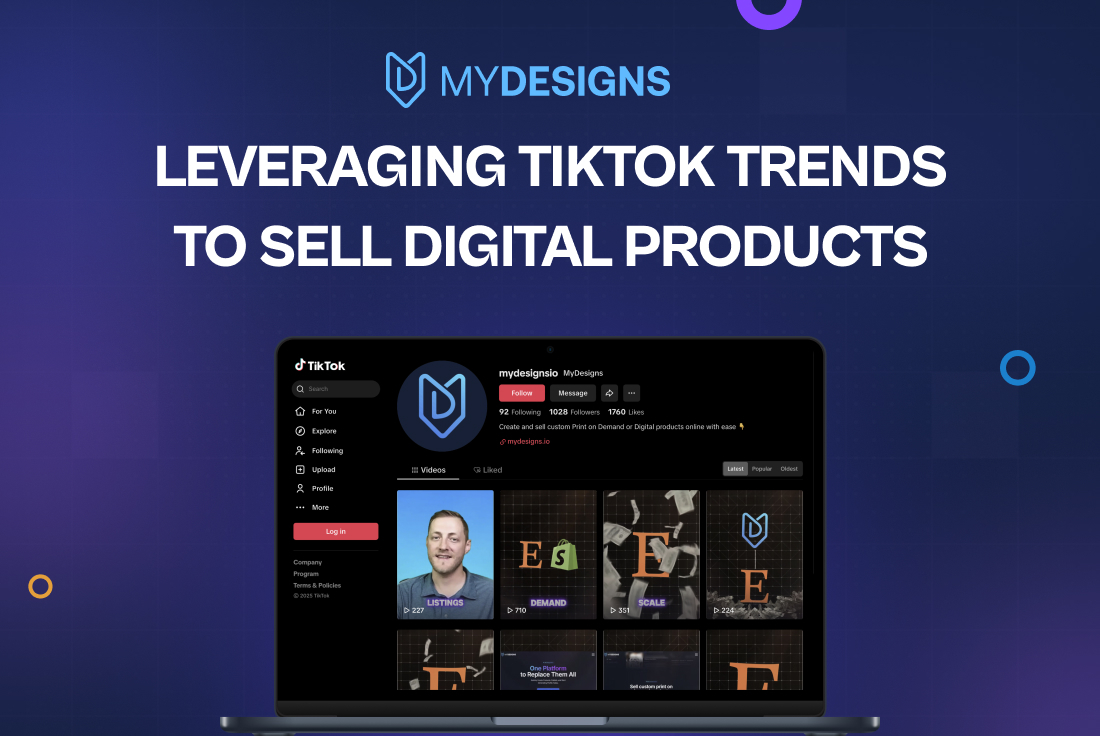
TikTok isn’t just about viral dances and memes—it’s a booming marketplace waiting for digital product sellers. The platform’s explosive growth and trend-driven culture make it a goldmine for creators who know how to ride the momentum.
In this guide, we’ll explore how e-commerce solopreneurs and brands can tap into TikTok trends to boost sales of digital products. From spotting the next big hashtag to crafting irresistible short videos, you’ll learn actionable strategies (and discover how MyDesigns supports you every step of the way) to turn TikTok’s buzz into buying power. Let’s dive in and transform those scrolling thumbs into happy customers!
Table of Contents
Why TikTok Is a Goldmine for Digital Product Sellers
TikTok’s meteoric rise in users and engagement has reshaped social commerce. The app now boasts over 1.5 billion users worldwide, with projections reaching 2.35 billion by 2029. More importantly, people practically live on TikTok—users spend more time here than on any other social platform. This means a captive audience that’s primed to discover new products.
In fact, TikTok just surpassed all other social networks in shopping: over 40% of U.S. TikTok users made a purchase on the platform in 2024, edging out Facebook and Instagram. By 2025 an estimated 45.5% of TikTok’s U.S. users will be shoppers on the app. For digital product entrepreneurs, this convergence of huge reach and buyer intent is a dream come true.
Related Article: How to go viral on TikTok in 2025
Growth stats and user behavior
 TikTok’s user behavior makes it especially fertile for e-commerce. Roughly 58% of global TikTok users already shop directly on the platform, which translates to over a billion people engaging with TikTok shopping content.
TikTok’s user behavior makes it especially fertile for e-commerce. Roughly 58% of global TikTok users already shop directly on the platform, which translates to over a billion people engaging with TikTok shopping content.
The app’s algorithmic “For You” feed is a discovery engine that blurs the line between content and commerce. Viewers don’t just watch—over 55% have made an impulse buy on TikTok after seeing a product, the highest impulse purchase rate of any social app. And they’re not just browsing, they’re hooked: the average user opens TikTok 8 times a day and spends nearly an hour daily watching videos.
This hyper-engagement means your product listings or shop links can surface repeatedly to an interested audience. TikTok’s audience also skews younger (Gen Z and Millennials), a demographic very comfortable with buying digital goods and downloads. Their enthusiasm (“TikTok made me buy it!”) signals a culture of discovery where a clever video can translate to instant sales.
Why short-form video converts viewers
TikTok’s short-form video format isn’t just entertaining—it’s superb at converting viewers into customers. Videos auto-play to the right audience, so products find users (not just the other way around). With bite-sized clips, there’s no heavy commitment; users can see a product in action in 15 seconds and purchase in a few taps.
This low friction is perfect for inexpensive, high-impulse purchases, which experts note TikTok excels at. The format builds trust quickly too. Authentic, unpolished videos often outperform slick ads, giving viewers a sense of personal connection.
Short videos trigger curiosity and FOMO in ways static images don’t—whether it’s a sped-up tutorial showing a stunning art print being created or a quick before-and-after using a design template. The result is a powerful “see it, want it” effect.
Identifying and Forecasting Viral Trends on TikTok
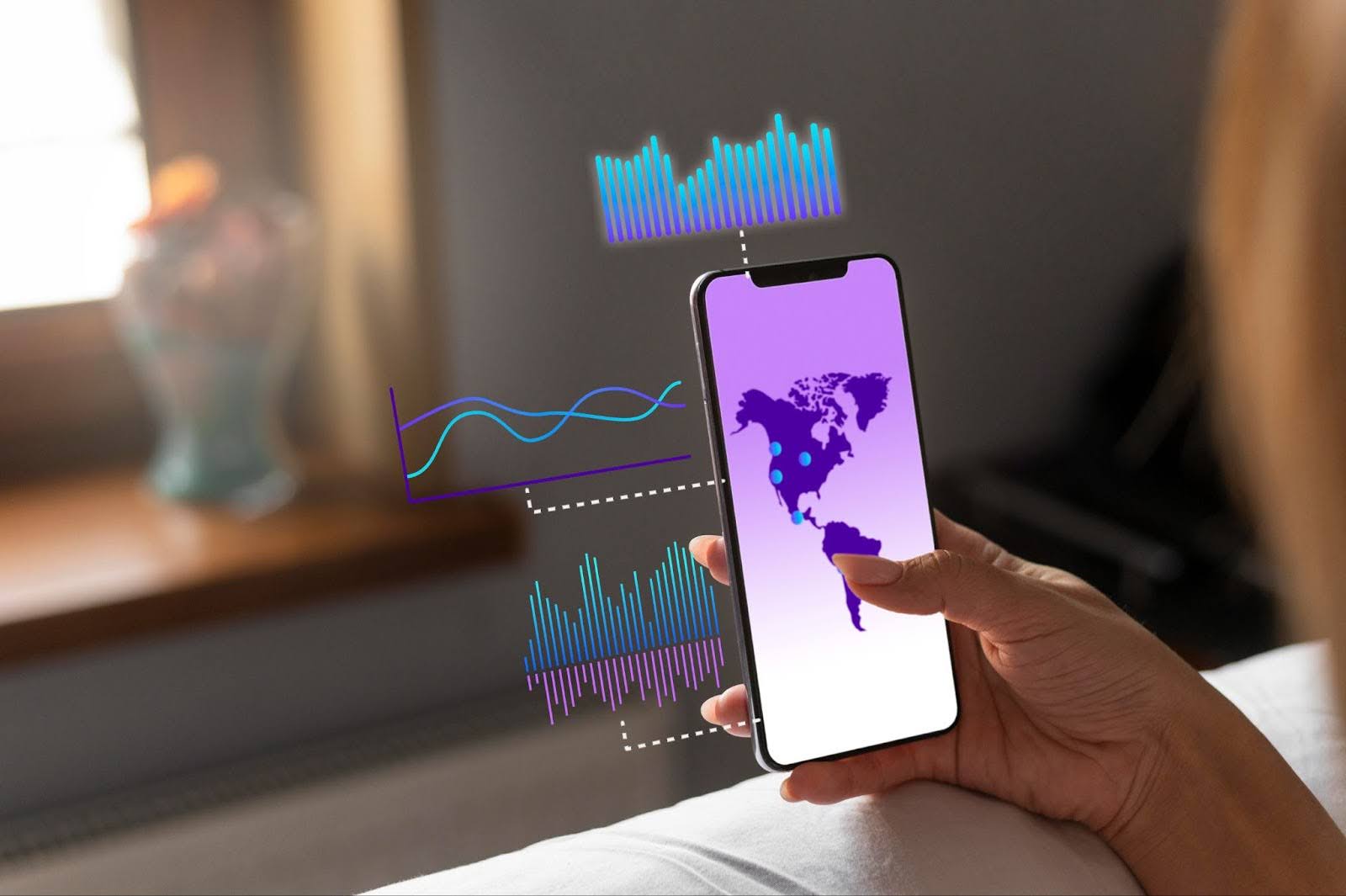 Success on TikTok means catching the wave at just the right moment. The good news: the platform offers plenty of clues about what’s about to explode in popularity. Trend-savvy sellers use a mix of observation and tools to stay ahead of the curve.
Success on TikTok means catching the wave at just the right moment. The good news: the platform offers plenty of clues about what’s about to explode in popularity. Trend-savvy sellers use a mix of observation and tools to stay ahead of the curve.
By knowing what’s trending today—and predicting what’ll be hot next week—you can align your product launches and content with topics that millions are already excited about. Here’s how to become a TikTok trend-spotter extraordinaire.
Trend-spotting tools and techniques
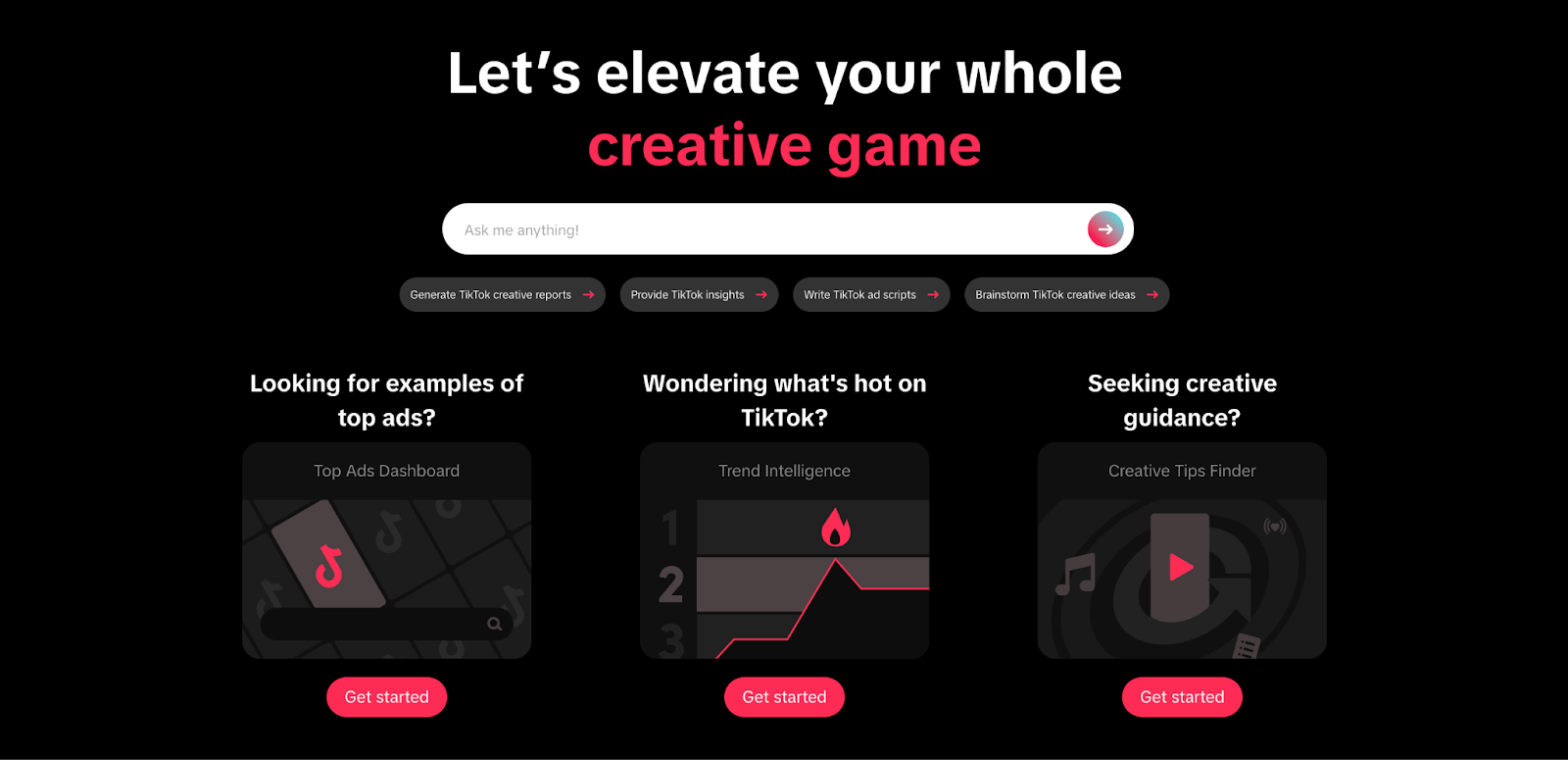 Start with being an avid TikTok user yourself. Scroll through your For You Page (FYP) daily to notice patterns in videos, sounds, and hashtags. When you see multiple creators riffing on the same joke, challenge, or audio clip, take note: that’s a trend in motion.
Start with being an avid TikTok user yourself. Scroll through your For You Page (FYP) daily to notice patterns in videos, sounds, and hashtags. When you see multiple creators riffing on the same joke, challenge, or audio clip, take note: that’s a trend in motion.
Beyond manual observation, leverage TikTok’s own Creative Center tools. TikTok’s Creative Center offers a treasure trove of real-time trend data, from top hashtags to breakout songs. You can filter by country and even industry to hone in on trends relevant to, say, art prints or digital planners.
Third-party apps like TrendTok (popular among creators) can also send alerts about emerging trends. Additionally, follow trend tracker accounts and TikTok marketing influencers who often discuss the latest viral crazes.
Outside the app, social listening tools and subreddits (like r/Tiktokhelp or marketing forums) share tips on what’s gaining traction. Consistency is key—set aside a little time each day to survey TikTok’s landscape. Over time, you’ll sharpen your instincts to distinguish fleeting fads from trends with sales potential.
Reading the Discover page and sounds chart
TikTok’s Discover page (the magnifying glass icon or search section) is a quick snapshot of what’s buzzing across the platform. Here you’ll find trending hashtags, keywords, and popular videos, often tailored to your viewing habits. Checking Discover can reveal trending topics that you might tap into—like a hashtag challenge or a seasonal event that’s going viral. For example, if #ArtHack or #StudyTok is trending and you sell digital planners, you’ve got a ready-made angle to join the conversation.
Another goldmine is the Trending Sounds chart in the Creative Center. TikTok reports that 88% of users consider sound a vital part of the experience, which means viral sounds drive viral videos. In the Creative Center’s Songs tab, you can see which music clips are blowing up this week. A rising audio clip (especially one “Approved for business use”) is an opportunity to use that sound in a product demo video.
TikTok even provides an “interest over time” graph for sounds and hashtags, showing you if a trend is on the upswing. If a particular song has a sharp growth curve, hopping on it now could amplify your reach.
Always ensure the sounds you use are legal for commercial use if you’re a business account to avoid copyright flags. By regularly checking these built-in charts and pages, you’ll develop a radar for the platform’s heartbeat at any given moment.
Timing your launch with trend cycles
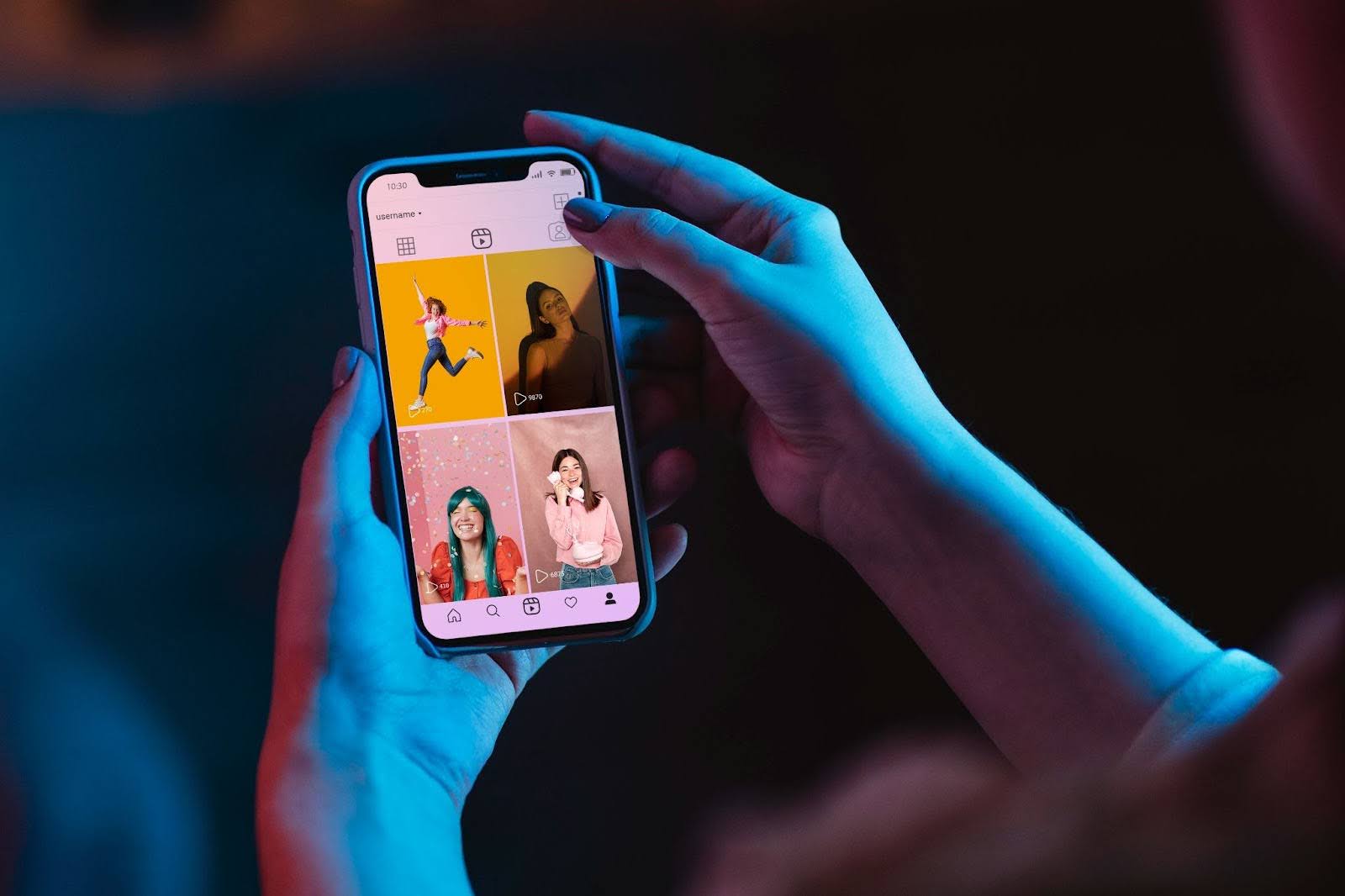 Catching a trend is as much about timing as it is about relevance. Every TikTok trend follows a lifecycle: it emerges, peaks, and eventually fades. Your goal is to align your content or product launch during the sweet spot when interest is high but competition isn’t yet oversaturated. Post too early, and the trend might not have enough momentum; post too late, and viewers have moved on to the next thing.
Catching a trend is as much about timing as it is about relevance. Every TikTok trend follows a lifecycle: it emerges, peaks, and eventually fades. Your goal is to align your content or product launch during the sweet spot when interest is high but competition isn’t yet oversaturated. Post too early, and the trend might not have enough momentum; post too late, and viewers have moved on to the next thing.
Use tools to gauge trend velocity – for example, if a hashtag’s interest-over-time chart shows a steady climb and not yet a peak, it’s a green light to jump in. TikTok itself categorizes trends as trend moments (short-lived bursts), trend signals (medium-term patterns), and trend forces (long-term cultural shifts).
For a quick “trend moment,” like a weekend challenge, you might create a fast-turnaround product (e.g., a meme-based printable) and drop it while the hype is red-hot. For longer “trend signals,” like a viral aesthetic or format, plan a series of videos or product variations over weeks. Keep an eye on how trend interest changes day by day—TikTok’s trending hashtag graphs or Google Trends can help here.
A smart tactic is to tease your product right as the trend peaks and make it available immediately. Trend enthusiasts love being first, so if they see your on-trend t-shirt or digital design at the height of the fad, they’re more likely to impulse-buy before it “gets old.”
Finally, be ready to pivot. If you sense trend fatigue (e.g. engagement dropping or users commenting “this trend is over”), gracefully move to the next big thing. The takeaway: ride the wave, but don’t drown in it. Time your entry, enjoy the surge, and exit before the trend crashes, all while leaving a lasting impression of your brand quality.
Optimizing Your Digital Products for TikTok Audiences
Not every product will thrive in TikTok’s fast-paced, trend-driven ecosystem. To win customers here, tailor what you’re selling (and how you’re selling it) to fit TikTok’s viral culture. Digital product shoppers on TikTok often act on impulse and emotion—they see something cool and they want it now.
Choosing product types that fit viral culture
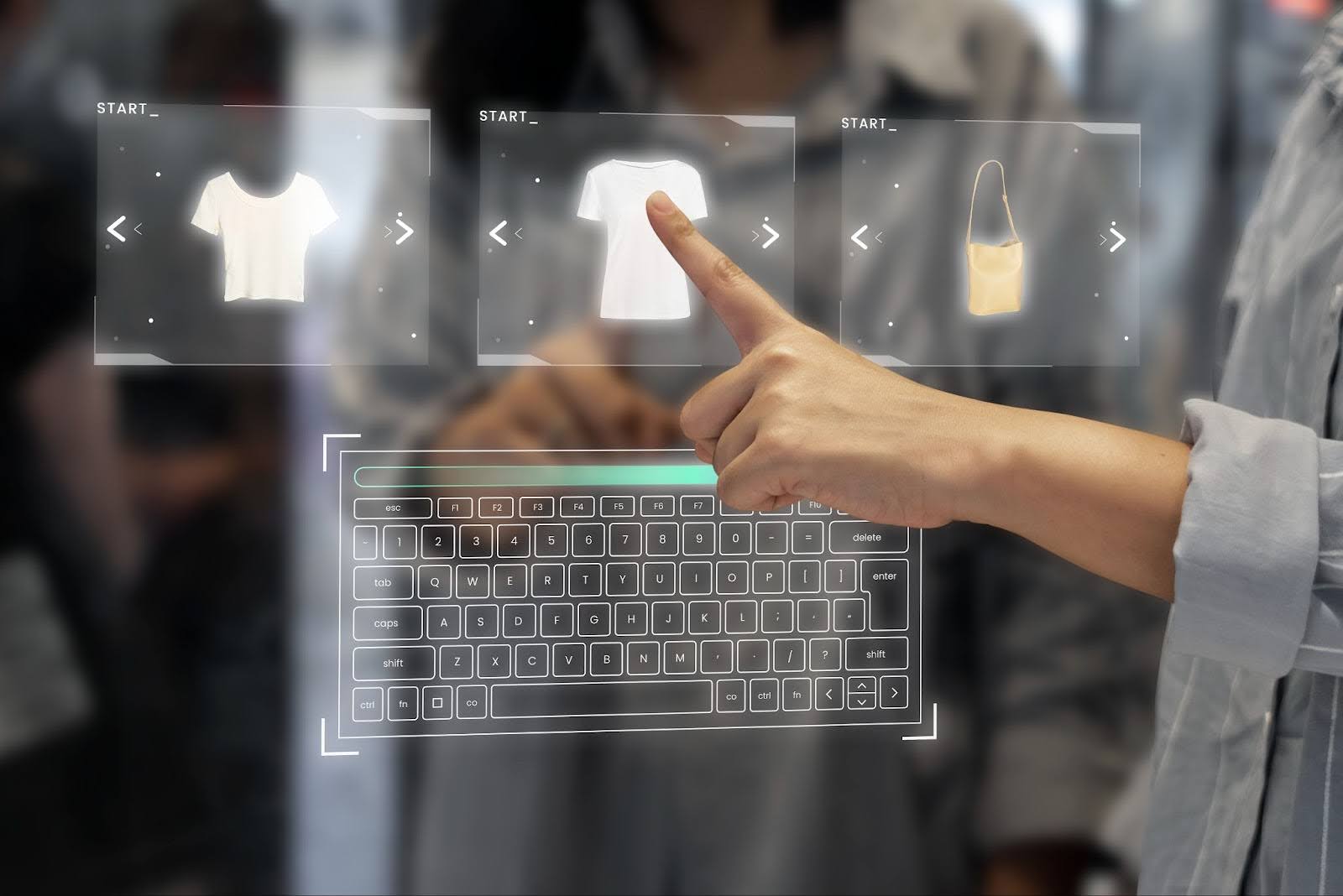 Think about the types of digital products that naturally lend themselves to TikTok’s style of content. The platform loves visual appeal and novelty. For print-on-demand sellers, this could mean bold T-shirt designs with trending catchphrases, or mugs and stickers featuring the meme of the moment. If a phrase or image is blowing up on TikTok (like an inside joke or viral reference), turning it into a quick POD product can be lucrative.
Think about the types of digital products that naturally lend themselves to TikTok’s style of content. The platform loves visual appeal and novelty. For print-on-demand sellers, this could mean bold T-shirt designs with trending catchphrases, or mugs and stickers featuring the meme of the moment. If a phrase or image is blowing up on TikTok (like an inside joke or viral reference), turning it into a quick POD product can be lucrative.
Digital download sellers can leverage viral aesthetics—consider printable wall art that matches a TikTok decor trend (e.g. celestial, cottagecore, vaporwave if those are trending), or Lightroom presets that give the “look” popular among TikTok influencers.
TikTok is also home to many niche communities (BookTok for book lovers, FitTok for fitness, etc.), so digital products serving those passions can do well (like e-book guides, workout planner PDFs, etc.). The key is relevancy.
Pricing psychology on impulse platforms
On TikTok, purchase decisions happen in seconds. A viewer sees your digital product, feels the urge, and needs only a gentle nudge to hit “buy.” Pricing can be that nudge—or a roadblock. Generally, keeping prices in the impulse-friendly range is wise. Many TikTok-driven sales are inexpensive, snackable buys. Think under $30 for a print-on-demand item or under $10 for a digital download, depending on the product.
At these price points, customers don’t overthink; they click because it’s a low-risk treat. Consider using charm pricing (e.g. $9.99 instead of $12) to make the decision even more subconscious. Limited-time TikTok promos (like a discount code hidden in your video caption or a “TikTok special” price) can also drive urgency.
Since TikTok users often discover you through entertainment content, they might not have the patience to compare prices like they would on Amazon. Make the offer feel like a no-brainer: “Get this gorgeous phone wallpaper pack for just $5.” Also, highlight value in a TikTok-friendly way—quick text overlays like “only $5!” or a sticker in your video that says “$5 deal 😍” can reinforce the message without requiring the viewer to read a description.
One note: if you sell premium digital products (like a $100 course), TikTok can still work, but you’ll need a stronger warm-up (multiple videos, testimonials, etc.) to justify the higher price. For most small digital goodies, keep it cheap, cheerful, and easy. The goal is to reduce any hesitancy. The faster a TikTok user can say “Shut up and take my money,” the better!
Using scarcity and limited drops
TikTok thrives on FOMO (fear of missing out), and you can harness this psychology by introducing a bit of scarcity around your digital products. Limited availability can spur viewers to act right now instead of “maybe later” (because on TikTok, later = lost).
When viewers feel a product is scarce, the perceived value and urgency shoot up. TikTok’s fast-moving feed means if they don’t grab it now, they might never find your video again. Use that dynamic: add a countdown or ticking clock element in your content to visually reinforce the ticking timer.
You should also communicate scarcity in your captions or via text overlay (e.g., “Limited edition” or “Drops sell out fast!”). Many TikTok sellers hype up product drops like mini events, which generates buzz.
Just be sure to keep any promises of scarcity honest—audiences can tell if a “limited” item stays around forever, which can erode trust. Done right, scarcity marketing on TikTok creates a healthy urgency that can dramatically boost conversion rates. People rush to buy because they want to be part of the hype and not left behind.
Crafting Trend-Responsive Content: Formats and Hooks
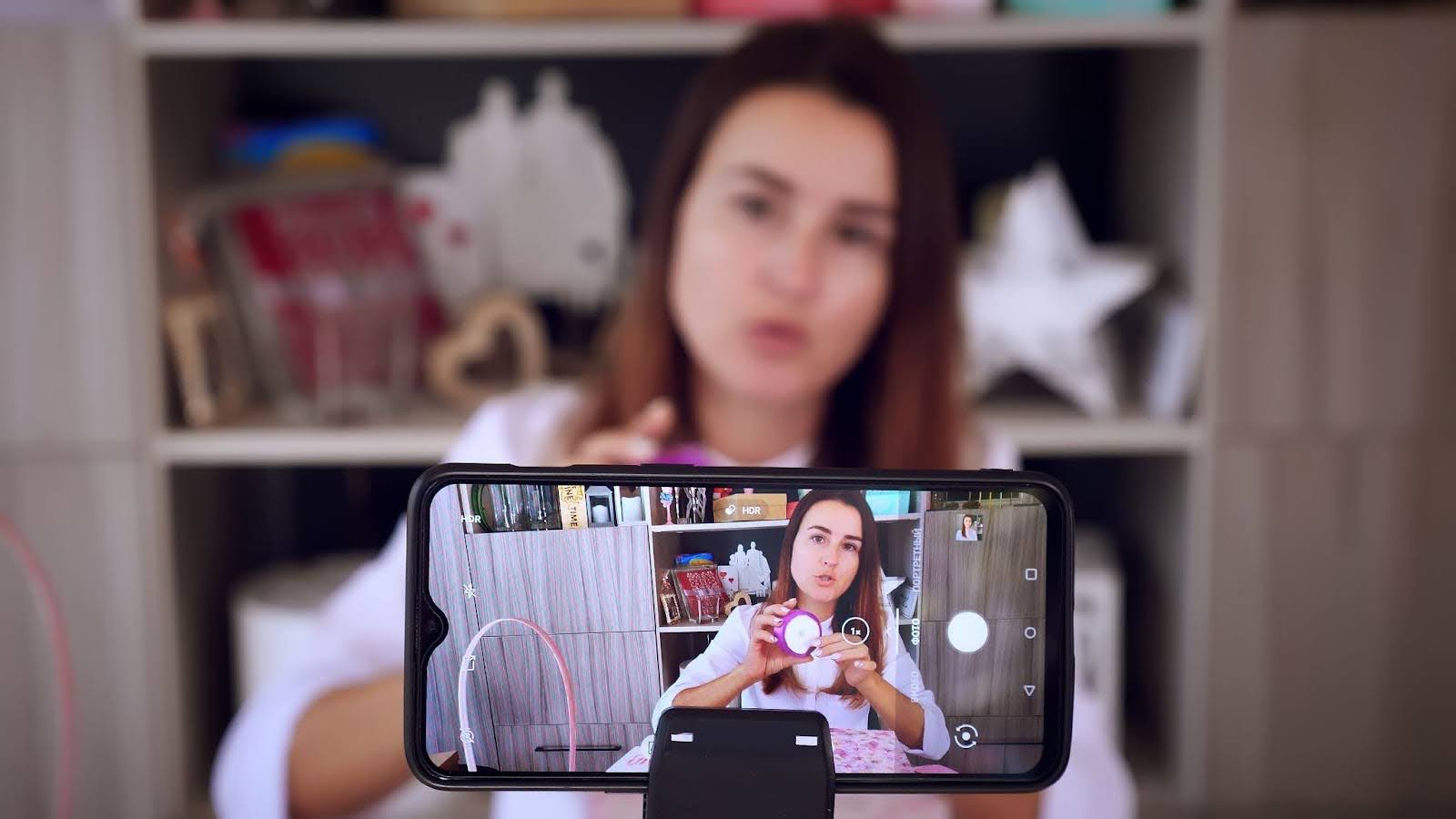 Great products need great content—especially on TikTok, where creative presentation is everything. To sell your digital products, you’ll want to craft videos that both embrace current trends and hook viewers immediately.
Great products need great content—especially on TikTok, where creative presentation is everything. To sell your digital products, you’ll want to craft videos that both embrace current trends and hook viewers immediately.
“Trend-responsive” content means you’re tuning into what’s popular on TikTok (be it a format, a sound, or a style) and weaving your product into that context seamlessly. The following are battle-tested TikTok content strategies: powerful hook techniques, smart use of trending sounds, and bite-sized storyboarding methods. With these, you can make sure your videos stop the scroll and drive viewers straight to your link.
Viral hook formulas (timer, curiosity gap, POV)
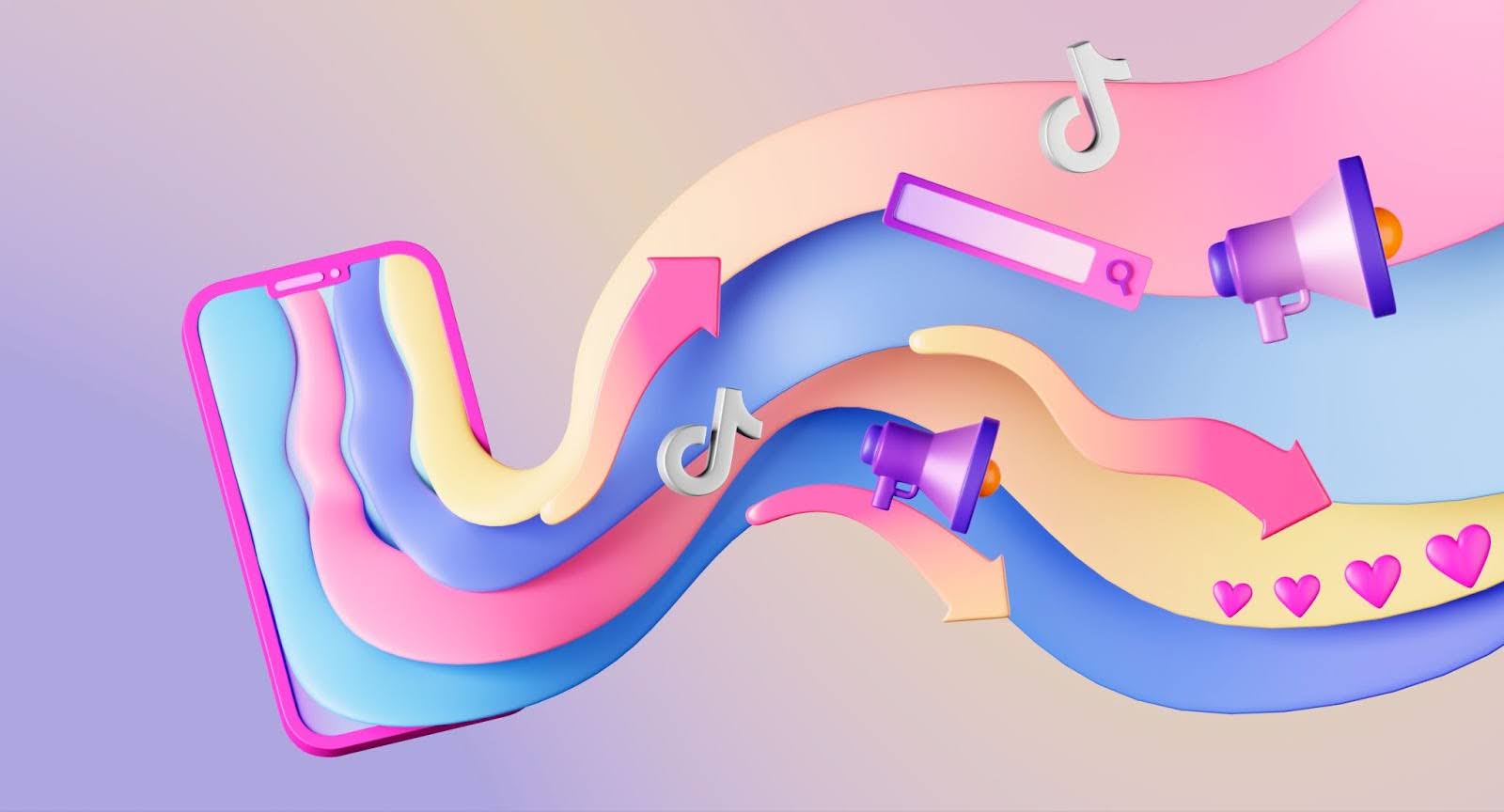 On TikTok, you have about 3 seconds or less to captivate the viewer—literally. In fact, 63% of the top-performing TikToks get to the point almost instantly. To achieve this, use viral hook formulas that TikTokers have perfected.
On TikTok, you have about 3 seconds or less to captivate the viewer—literally. In fact, 63% of the top-performing TikToks get to the point almost instantly. To achieve this, use viral hook formulas that TikTokers have perfected.
One effective hook is the timer or countdown. For example, start your video with on-screen text like “10 Seconds to Show You Something Amazing…” accompanied by a countdown timer. This creates instant curiosity—viewers will stick around to see the payoff.
Another hook technique is the curiosity gap: present a teaser that piques interest but withholds the conclusion. You might say (or text overlay) “I tried the weirdest niche on TikTok to sell art – here’s what happened” or “This design was banned?!” without immediately explaining, so users feel compelled to watch till the reveal.
A popular storytelling angle is using POV (Point of View) hooks. For instance, start with “POV: You turned your study notes into a viral digital product” – framing the video as a relatable scenario or mini story. POV content tends to draw viewers in because it positions them inside the narrative.
Above all, be creative and authentic with hooks—TikTok audiences love boldness, but they also sniff out clickbait. Aim to intrigue, not mislead. Do that, and you’ll stop thumbs in their tracks.
Leveraging trending sounds safely
 Audio is half of the TikTok experience. A trending sound – whether it’s a catchy song clip or a funny voiceover snippet – can catapult your video to the feeds of anyone who’s hooked on that audio. When you leverage a trending sound, you ride the wave of its popularity; TikTok’s algorithm often bundles content by sound, meaning if thousands are enjoying a particular audio, your product video using the same sound can slip right into the rotation.
Audio is half of the TikTok experience. A trending sound – whether it’s a catchy song clip or a funny voiceover snippet – can catapult your video to the feeds of anyone who’s hooked on that audio. When you leverage a trending sound, you ride the wave of its popularity; TikTok’s algorithm often bundles content by sound, meaning if thousands are enjoying a particular audio, your product video using the same sound can slip right into the rotation.
The key is to use sounds strategically and safely. First, ensure you have a business account-friendly sound if you’re officially selling (TikTok provides a Commercial Music Library for businesses). Using a copyrighted hit song on a business post can result in muted audio or limited reach – a disaster for a video dependent on sound. Instead, look for trending sounds labeled “Commercial use” or consider user-generated sounds that have gone viral (like a funny voice clip or instrumental).
Once you’ve found the right audio, brainstorm how to tie it to your product. Sometimes the connection can be humorous – for example, a viral sound of someone saying “Wow, that was easy!” could perfectly accompany a screen capture of how simple it is to download and use your digital planner.
Storyboarding 15-second demos
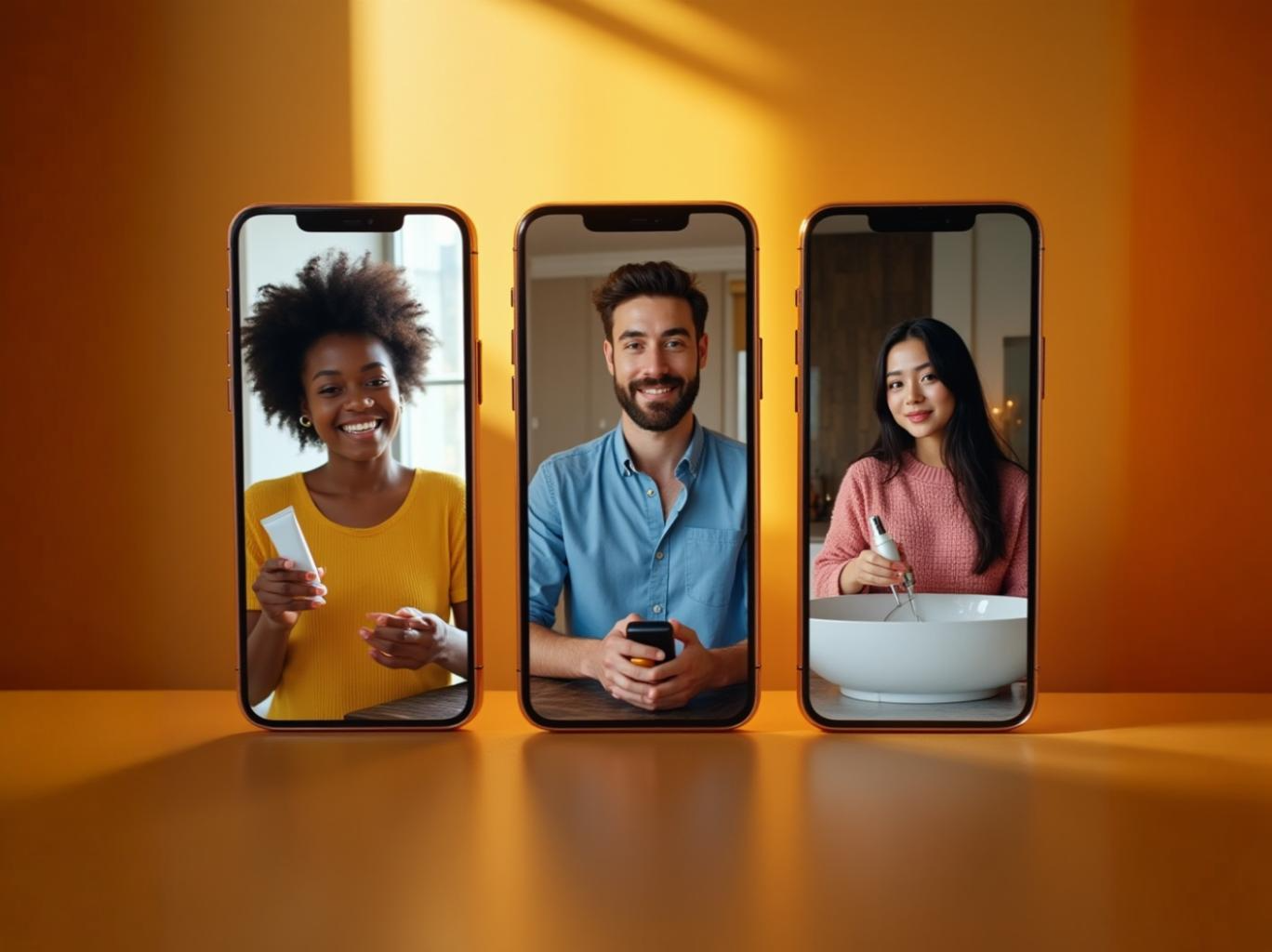 When it comes to showcasing a product on TikTok, especially a digital one, planning a tight 15-second demo can work wonders. Attention spans are short, but 15 seconds (or even 30, if you’ve truly earned it) is enough to deliver a compelling mini-story about your product. Storyboarding doesn’t require fancy skills—just outline a beginning, middle, and end for your clip before you hit record.
When it comes to showcasing a product on TikTok, especially a digital one, planning a tight 15-second demo can work wonders. Attention spans are short, but 15 seconds (or even 30, if you’ve truly earned it) is enough to deliver a compelling mini-story about your product. Storyboarding doesn’t require fancy skills—just outline a beginning, middle, and end for your clip before you hit record.
For example, let’s say you’re selling a set of printable habit trackers. Your “story” could be: Beginning – show a chaotic desk or a frustrated face (problem setup), Middle – cut to the habit tracker PDF being filled out or styled on a desk (the solution/product in action), End – show the same person now looking organized and happy, with a neat desk and the tracker pinned on the wall (the result).
This simple narrative arc makes the benefit of your product crystal clear. Keep each segment just a few seconds. Use text overlays to reinforce key points, like “Struggling to stay organized?” at first, “Our digital habit tracker 📝👉” during the middle demo, and “Feeling on top of your game!” at the end. TikTok allows quick cuts, so embrace a fast pace—every second should show a new angle or step to maintain visual interest. If your product is digital (like an e-book or template), you might screen-record scrolling through it, highlight its features with TikTok’s annotation tools (arrows, circles), then cut to a testimonial or use-case image.
Creating High-Impact Assets with MyDesigns
To fuel your TikTok strategy, you’ll need a pipeline of killer visuals and mockups. This is where MyDesigns becomes a creator’s secret weapon. MyDesigns is an all-in-one platform that uses AI and automation to help you design, mock up, and publish products at scale. Instead of spending hours in Photoshop or making one-off videos, you can leverage MyDesigns to generate on-trend graphics, format your images for TikTok, and even schedule product drops in bulk.
Let’s look at a few ways MyDesigns can turbocharge your TikTok content creation, so you can focus on going viral while the heavy lifting happens behind the scenes.
Generating graphics in Dream AI
Ever wished you had a design team to whip up new graphics for every trend? With MyDesigns’ Dream AI feature, you do—inside your computer. Dream AI is an advanced AI image generator that turns text prompts into stunning designs in seconds.
This means when a TikTok trend pops up (say a sudden craze for “vaporwave” style art or a meme image everyone’s using), you can literally ask Dream AI to create a unique graphic in that style for you. For example, type “cyberpunk cat illustration for t-shirt” and Dream AI will produce original art that you can use on a product.
Related Article: Introduction to Dream AI Image Generation Models
The beauty for TikTok sellers is speed and variety. You can generate multiple variations and pick the catchiest one to feature in a video. These AI-created visuals can be used as video backgrounds, product images, or even short animations (by generating frames you animate).
Batch-sizing thumbnails in Image Utilities
When posting product videos or listing digital goods on TikTok (and other platforms), consistency and clarity in your visuals make a big difference. TikTok’s interface is mobile-first, so you want thumbnails and images that are perfectly sized and sharp.
MyDesigns’ Image Utilities tool is a lifesaver here, offering bulk editing features to get all your graphics in tip-top shape. Need to resize 20 mockup images into a vertical 9:16 format for TikTok Stories or ads? You can do that in one go.
Want to add a subtle watermark or overlay text (like your @handle or a “Sale” badge) on all images? A couple of clicks and it’s done across the batch. For example, if you have multiple product photos, Image Utilities can remove backgrounds in bulk, upscale resolution, or apply effects to give them a consistent look. This ensures that when someone swipes through a carousel or your TikTok Shop, your images look cohesive and professional.
Scheduling bulk mockup drops
 Consistency is crucial on TikTok—both in posting and in product releases. Rather than manually adding new listings one by one or struggling to post content regularly, MyDesigns lets you work smarter with bulk actions. You can create a collection of new product mockups (say 10 new print-on-demand designs inspired by a trending topic) and prepare them all at once.
Consistency is crucial on TikTok—both in posting and in product releases. Rather than manually adding new listings one by one or struggling to post content regularly, MyDesigns lets you work smarter with bulk actions. You can create a collection of new product mockups (say 10 new print-on-demand designs inspired by a trending topic) and prepare them all at once.
Related Article: How To Create Custom PSD Mockups for MyDesigns
MyDesigns’ Mockups feature even allows you to generate high-quality product mockup images in bulk, so every design is shown on a real product (t-shirts, mugs, art prints, etc.) without extra effort. Once your assets are ready, use MyDesigns’ listing management to schedule or publish these new products simultaneously across platforms.
For example, if you know a particular TikTok trend peaks on weekends, you might queue up a batch of trend-related product listings to go live Saturday morning. The platform’s bulk publish tool can push listings to TikTok Shop, Etsy, Shopify and more with just a few clicks.
TikTok Shop vs Link-Out Funnels
As a TikTok seller, you have two primary pathways to convert viewers into customers: keeping them in-app with TikTok Shop or directing them to an external site (like your Etsy, Shopify store, or Gumroad page). Each approach has its pros and cons.
TikTok Shop is the platform’s native e-commerce solution, letting users buy without ever leaving TikTok. Link-out funnels, on the other hand, use TikTok as traffic fuel to send buyers to an outside website. Which should you use? Possibly both, depending on your strategy. Let’s compare the experiences and best practices for each, so you can maximize sales while providing a smooth customer journey.
Pros and cons of native checkout
TikTok Shop (native checkout) offers a frictionless buying experience. The biggest pro is that customers can tap on a product tagged in your video or visit your TikTok Shop tab and purchase right there with a few taps. This convenience can significantly increase conversion rates—people are more likely to complete a purchase when they don’t have to leave the app or re-enter payment info.
TikTok also tends to promote content that keeps users on the platform, so using TikTok Shop might give your videos a slight algorithmic boost. Another advantage: TikTok Shop has social features like showing how many people bought an item, which can build trust via social proof.
However, there are some cons. TikTok Shop is still relatively new in some regions (just launched in the US in late 2023), so it’s evolving. There might be fees or commission cuts to consider, and limited customization of the checkout experience compared to your own site.
For digital products, in particular, TikTok Shop historically has been tricky – the platform initially focused on physical goods with shipping, and some reports indicated digital-only items weren’t directly supported. (Sellers have found workarounds, like delivering a “PDF” via email after a physical placeholder purchase, but it’s extra legwork.)
Additionally, not every TikTok user is used to buying in-app yet; some might trust a known marketplace like Etsy more for certain goods. Link-out funnels (using a link in bio or product URLs to external sites) give you full control over the storefront and usually better support for digital product delivery (instant downloads, license keys, etc.). The downside is the extra click: users have to leave TikTok, which can drop conversions. You also risk losing people to distractions once they’re off the app.
In summary, native checkout shines for impulse buys and lower-friction sales, while external links are sometimes necessary for digital content delivery or brand-specific experiences. Many creators actually use a hybrid: they enable TikTok Shop for what they can, but also have a link in bio for those who prefer the full website or for products not on TikTok Shop. Evaluating your audience’s behavior and your product type will guide the right mix.
Setting up TikTok Shop for digital downloads
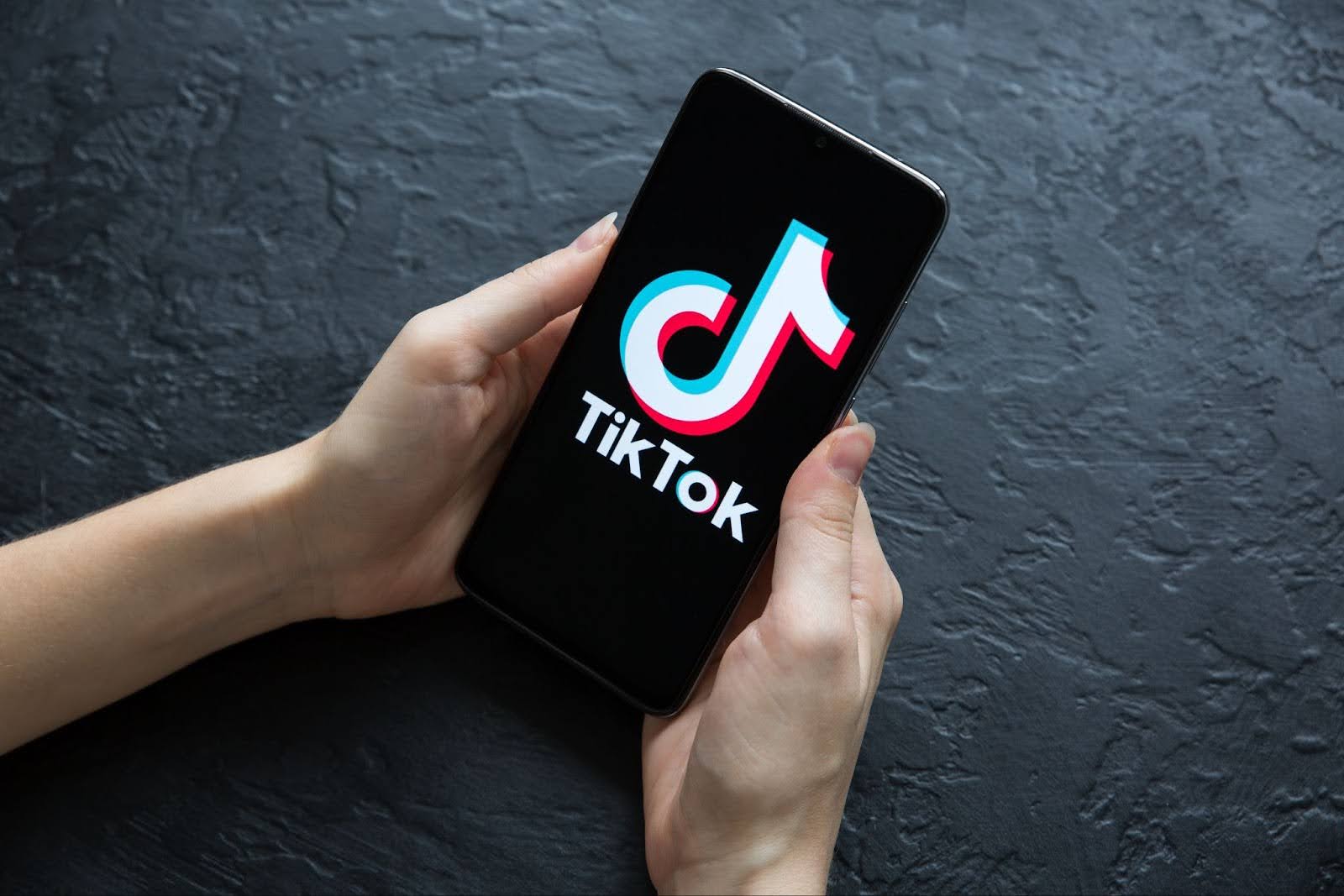 If you decide to dive into TikTok Shop as a channel, setting it up for even digital products is worth a shot given TikTok’s huge audience. First, you’ll need a TikTok Business Account and you have to apply to become a TikTok Shop seller (providing business info and verification). Once approved, you can list products on your TikTok Shop.
If you decide to dive into TikTok Shop as a channel, setting it up for even digital products is worth a shot given TikTok’s huge audience. First, you’ll need a TikTok Business Account and you have to apply to become a TikTok Shop seller (providing business info and verification). Once approved, you can list products on your TikTok Shop.
For digital goods, since TikTok doesn’t natively host file downloads, you have a couple of options. One approach is to treat the digital product like a physical one but deliver it digitally: for example, list a “Digital Art Print – Emailed PDF” as a product. In the description, clarify that buyers will receive it via email or a download link instead of a shipped item. When someone purchases, you manually (or via an automated email) send them the file. This isn’t fully automated but is a common workaround.
Another method is to bundle a trivial physical component (like “free sticker with your digital purchase”) so you can technically input shipping, but then primarily deliver the digital item online. Keep an eye on TikTok Shop’s policies, as they may evolve to be more friendly to digital goods over time.
On the plus side, TikTok Shop allows you to tag products in your videos – a little pop-up or link that viewers can click while watching. This is gold for conversion. Imagine showcasing your digital recipe book in a video and having a “Buy Now – $5” tag right there. Setting this up involves linking your product catalog in TikTok’s Seller Center to your videos (you’ll see an option to add products when posting a TikTok if you’re a Shop seller).
Also, optimize your product listings: use clear images (perhaps a mockup or preview of the digital file), and concise titles and descriptions that match keywords users might search (TikTok is increasing its search functionality).
And importantly, ensure you have a system to deliver files promptly – a great product experience will lead to positive reviews or comments on TikTok, which can further boost trust and visibility. While TikTok Shop setup might take a bit of initial effort, it can pay off by removing even the slight friction of a bio link click, keeping impulse-happy TikTokers in a buying flow.
Driving traffic to Etsy, Shopify, or Gumroad
Even if you embrace TikTok Shop, you’ll likely still use external sites – and many sellers rely entirely on them. TikTok can be a firehose of traffic to your Etsy, Shopify, or Gumroad store if you handle it right. The classic approach is using the link in your bio to direct viewers.
Make sure your TikTok bio has a call-to-action: e.g. “🎨Shop my designs here 👉 [your link]”. For users with under 1,000 followers, TikTok might not allow a clickable link, so you could use a Linktree or a simple URL in the bio text that’s easy to remember or copy.
In videos, while you can’t put clickable links in captions, you can encourage people with cues like “Link in bio to download” or even overlay the URL briefly (though most will just go via your profile).
One tip: if you have an Etsy shop, consider using Etsy’s built-in social share or a UTM-tagged link so you can track how many visitors TikTok sends (Etsy’s stats or Google Analytics can show referrers). For Shopify or your own site, definitely set up analytics or the TikTok Pixel to measure traffic and conversions from TikTok clicks.
Optimize your landing page for TikTok users – assume they are on mobile and coming with quick intent. So, ensure the page they land on is mobile-friendly, loads fast, and directly shows the product(s) featured in your TikTok. If your video went viral for a specific product, it’s smart to have that product front and center when they click through (consider a dedicated landing page if needed).
Gumroad sellers can link directly to a Gumroad page; just note that Gumroad’s interface is fairly quick, which is good. The challenge with link-outs is keeping the user’s attention through the jump. That’s why some creators will say something in their TikTok like “If you want this, head to my profile right now – it’s in my bio” to create urgency to click.
Finally, remember to treat your external shop visitors like the VIPs they are; maybe offer a small TikTok follower discount or a freebie. Since you can’t reach back out to TikTok viewers easily, capturing them on your site (via an email sign-up for the download, for instance) can help you follow up later. In summary, external funnels require a bit more nurturing, but they give you control and often better support for delivering digital products.
With a strong TikTok content game feeding into them, you can build an engine where TikTok is the top of the funnel and your shop is the conversion zone.
Amplifying Reach with Influencers and Ads
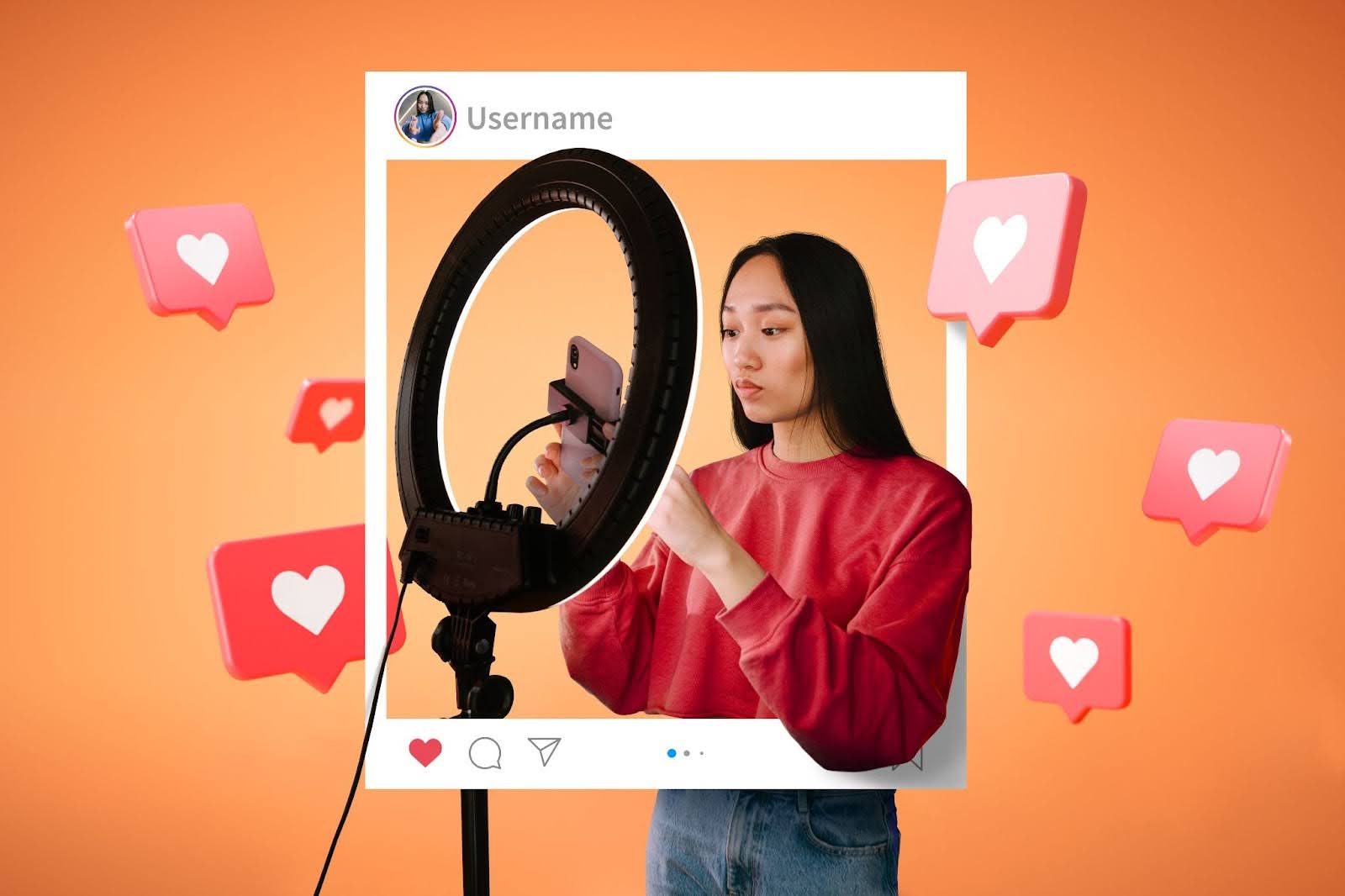 You don’t have to do all the heavy lifting on TikTok alone. Collaborating with others and investing in promotion can dramatically amplify your reach. This is where influencer marketing and TikTok’s advertising options come into play.
You don’t have to do all the heavy lifting on TikTok alone. Collaborating with others and investing in promotion can dramatically amplify your reach. This is where influencer marketing and TikTok’s advertising options come into play.
By teaming up with creators (especially micro-influencers who have tight-knit followings) or by using Spark Ads to boost your best posts, you can get in front of far more potential buyers than organic reach alone might allow. And the best part? TikTok’s algorithm and audience often favor content that doesn’t feel like traditional ads. That means your promo efforts can still come off as authentic TikTok content if executed well. Let’s break down how to extend your presence on the platform strategically.
Micro-influencer partnerships
Partnering with TikTok influencers can expose your digital products to established communities that trust the creator’s recommendations. Micro-influencers (typically those with 5,000 to 50,000 followers, though definitions vary) are often a sweet spot for e-commerce collabs. They may not have millions of followers, but their engagement rates are usually higher and their audiences more niche. For example, if you sell digital planners, an influencer who focuses on study tips or organization hacks with 20k dedicated followers might drive more sales than a random celeb with a million followers who aren’t specifically interested in your niche.
To start, identify TikTokers whose content aligns with your product’s theme. Look at their engagement: lots of comments and likes relative to views is a good sign. When reaching out, come with a win-win proposal. You could offer them a commission via an affiliate link, a flat fee, or even free access to your products. Many micro-influencers are happy to promote products they genuinely like and that provide value to their audience (it makes them look good too). For instance, you might give a crafting TikToker a bundle of printable coloring pages from your shop to try, and if they love it, they create a video tutorial using them. Always allow creative freedom—TikTok creators know what content format works for their viewers. It could be a review, an unboxing, a “day in the life” featuring your product, or a skit incorporating it. Make sure they disclose the partnership per guidelines (usually a simple #ad or #gifted in the caption).
One huge advantage here is social proof: when someone people already follow vouches for your product, new customers come in with trust. Moreover, these partnerships can be cost-effective. Instead of expensive traditional ads, you might only “pay” in free product or modest fees yet get content that lives on TikTok indefinitely.
Spark Ads basics for product videos
TikTok’s advertising platform offers a unique format called Spark Ads that is particularly great for e-commerce videos. Unlike standard ads, Spark Ads let you promote organic TikTok posts—either your own or even an influencer’s—with the boosted content still appearing as a normal TikTok (complete with the original video’s likes, comments, and shares). In essence, it “sparks” further reach for content that’s already proven to resonate.
For a digital product seller, this means if you have a TikTok video that’s doing decently (say, a product demo that got good engagement), you can put some budget behind it to show it to a wider targeted audience, all while keeping the social proof intact.
Here’s how to leverage Spark Ads in a nutshell: First, create or identify a post worth promoting. It should have a strong hook and clear showcase of your product (essentially all the things we covered earlier for organic content).
Next, in TikTok Ads Manager, choose Spark Ad and select the post you want to amplify. You’ll need the video’s code (TikTok provides instructions for obtaining a post’s “Spark” code). Set your targeting – TikTok allows you to pick demographics, interests, even specific behaviors.
For example, you might target “technology enthusiasts” if you’re selling digital art for gamers, or target followers of certain big accounts related to your niche. Also set your budget and duration (you can start small, even $20 over a few days, to test the waters).
The beauty of Spark Ads is viewers often don’t realize it’s an ad because it looks like a regular TikTok video with your account name. They can like, comment, follow you, and share the video as usual, which boosts credibility. Meanwhile, you get analytics on how the ad is performing (views, click-throughs to your profile or link if added, etc.).
Budgeting and measuring ROI
 When venturing into influencers and ads, it’s important to approach it like an investment with expected returns. Start by setting a budget that you’re comfortable with as a marketing expense. This could be a monthly figure or per campaign. For micro-influencers, you might allocate a few hundred dollars (or equivalent in free products) to test out a handful of partnerships.
When venturing into influencers and ads, it’s important to approach it like an investment with expected returns. Start by setting a budget that you’re comfortable with as a marketing expense. This could be a monthly figure or per campaign. For micro-influencers, you might allocate a few hundred dollars (or equivalent in free products) to test out a handful of partnerships.
For TikTok Ads, even a small budget like $10-$50 per day on Spark Ads can yield insights quickly. The key is to test and iterate. Try promoting different types of videos or targeting slightly different audiences, and see which combination gives you the best results. TikTok’s ad platform provides metrics like click-through rate (CTR), conversion rate (if you have the TikTok Pixel on your site or are using TikTok Shop), and cost per result. Pay attention to these. If you spend $50 on an ad and it brings in $200 of product sales, that’s a fantastic ROI (Return on Investment). If it brings in $0, then you tweak the content or targeting and try again.
For influencer collabs, track any custom discount codes or affiliate links you gave them to attribute sales. If you can’t track directly, gauge the impact through TikTok analytics (e.g., did your follower count or profile visits spike after they posted?) or a bump in overall sales on the days following their shoutout.
Allocate budget incrementally: don’t pour $1000 into an untested ad creative. Instead, do a small “learning budget” first. TikTok ads actually optimize over time (they learn who’s engaging and adjust who they show to), so give campaigns a few days to stabilize before judging. When you find a winner – say an ad that’s consistently converting at a low cost – consider scaling up budget for that ad or expanding that influencer program.
Also, compare ROI across channels. Maybe you find that $1 spent on TikTok ads yields $4 in revenue (a 400% ROI), while gifting a $50 product to an influencer yields $300 in sales (600% ROI). Those are great returns, but perhaps another influencer did only $50 in sales (0% ROI). Use this data to refine where you put money. It’s not all about immediate sales either; factor in customer lifetime value. If a TikTok ad gets you a new customer who might buy again, the ROI is higher in the long run than initial numbers show.
Lastly, set some KPIs (Key Performance Indicators). For example, aim for a certain number of website clicks or a target cost per new customer acquired. TikTok’s relatively low CPMs (cost per thousand views) and high engagement can make its ads more cost-effective than other platforms if done right.
Tracking Performance and Iterating Quickly
TikTok moves at lightning speed, and so should your optimization cycle. The beauty of selling on a digital platform is the wealth of data at your fingertips. By tracking your performance closely, you can figure out what’s hitting the mark and what needs a tweak. Then, you iterate—adjust your content, your strategy, or your products—quickly to ride the wave or course-correct.
In this section, we’ll cover the key metrics to monitor on TikTok, how to A/B test ideas to continuously improve, and how tools like MyDesigns’ dashboards can give you a holistic view of your sales data. Essentially, this is about closing the loop: learning from each campaign or video and making the next one even better.
Key TikTok analytics metrics
TikTok provides a built-in Analytics dashboard for Pro/Business accounts that is a goldmine of information. The top metrics to watch include Views, Likes, Comments, Shares, and Completion Rate of your videos. Views tell you raw reach – how many eyes saw your content. But engagement (likes, comments, shares) tells you how compelling it was.
Shares are especially valuable; if people are sharing your product video, that’s like word-of-mouth on steroids. Pay attention to Average Watch Time and Completion Rate (the percentage of people who watched your video to the end). If you have a 15-second video but average watch time is only 5 seconds, most viewers drop off early – meaning your hook might need improvement.
On the other hand, if people are watching 80-100% of the video, that’s a sign the pacing and content are on point. Another interesting stat is Follower growth after a video – if one of your TikToks nets you an unusual spike in followers, it resonated with people enough that they want to see more from you. On the sales side, if you have TikTok Shop, you’ll get metrics like product views, clicks, and purchase conversion rates in the Seller dashboard.
Track which products get the most clicks from your TikTok videos. If a certain digital download is consistently popular, maybe make more like it. If another gets ignored, perhaps the content around it isn’t strong or the product itself needs rethinking. If you’re linking out, monitor your website analytics: traffic coming from TikTok (often labeled as direct or social traffic if not explicitly tagged) and what those visitors do (bounce rate, time on site, etc.).
Additionally, pay attention to audience demographics in TikTok Analytics. Are you unexpectedly big in a country you didn’t anticipate, or with an age group? This could open new opportunities (or show you if you’re missing your intended audience).
Ultimately, decide on a few core KPIs: for example, “Each video should achieve at least a 10% engagement rate” or “At least 5% of viewers click the bio link.” Use those as benchmarks and strive to improve them. TikTok’s algorithm can change, and audience tastes shift, so treat these metrics as a compass rather than a report card – they guide you on where to experiment next.
Split-testing hooks and CTAs
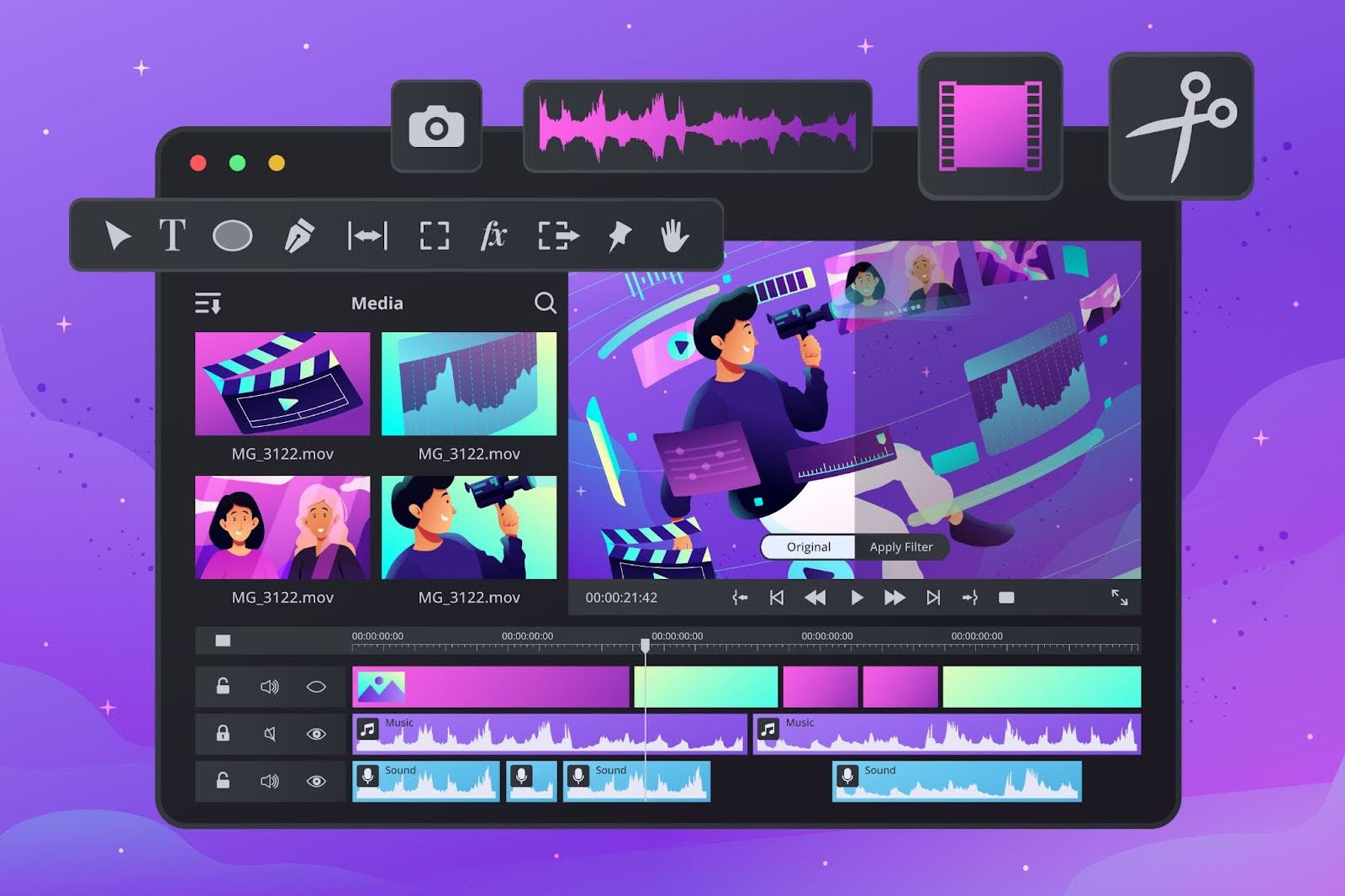 Because TikTok content creation is relatively quick, you have the freedom to experiment—a lot. Split-testing (A/B testing) on TikTok can be done by creating multiple variations of a video and seeing which performs better. For instance, you could take the same product demo but try two different openings (two different hooks) in two separate TikToks.
Because TikTok content creation is relatively quick, you have the freedom to experiment—a lot. Split-testing (A/B testing) on TikTok can be done by creating multiple variations of a video and seeing which performs better. For instance, you could take the same product demo but try two different openings (two different hooks) in two separate TikToks.
When split-testing, change only one element at a time per test if possible, so you know what caused any difference. It could be the music choice, the text overlay color, or the video length. Even the order of clips can be tested (maybe leading with the product vs. leading with the problem scenario). Keep a log of your experiments and their outcomes. Over time, you’ll build a playbook of what works best for hooking your particular audience and what CTAs drive them to action.
TikTok’s environment also allows quick feedback in comments. Sometimes viewers will literally tell you what they liked or if something was confusing—treat that as qualitative A/B testing data.
Another tactic: use TikTok’s promote feature (or Spark Ads) to boost each variant to a wider but similar audience and see which gets better results when both have a comparable spend. This can sometimes accelerate the data-gathering beyond your follower base. The ability to iterate swiftly is one of your greatest advantages as a digital seller.
Using MyDesigns for sales data
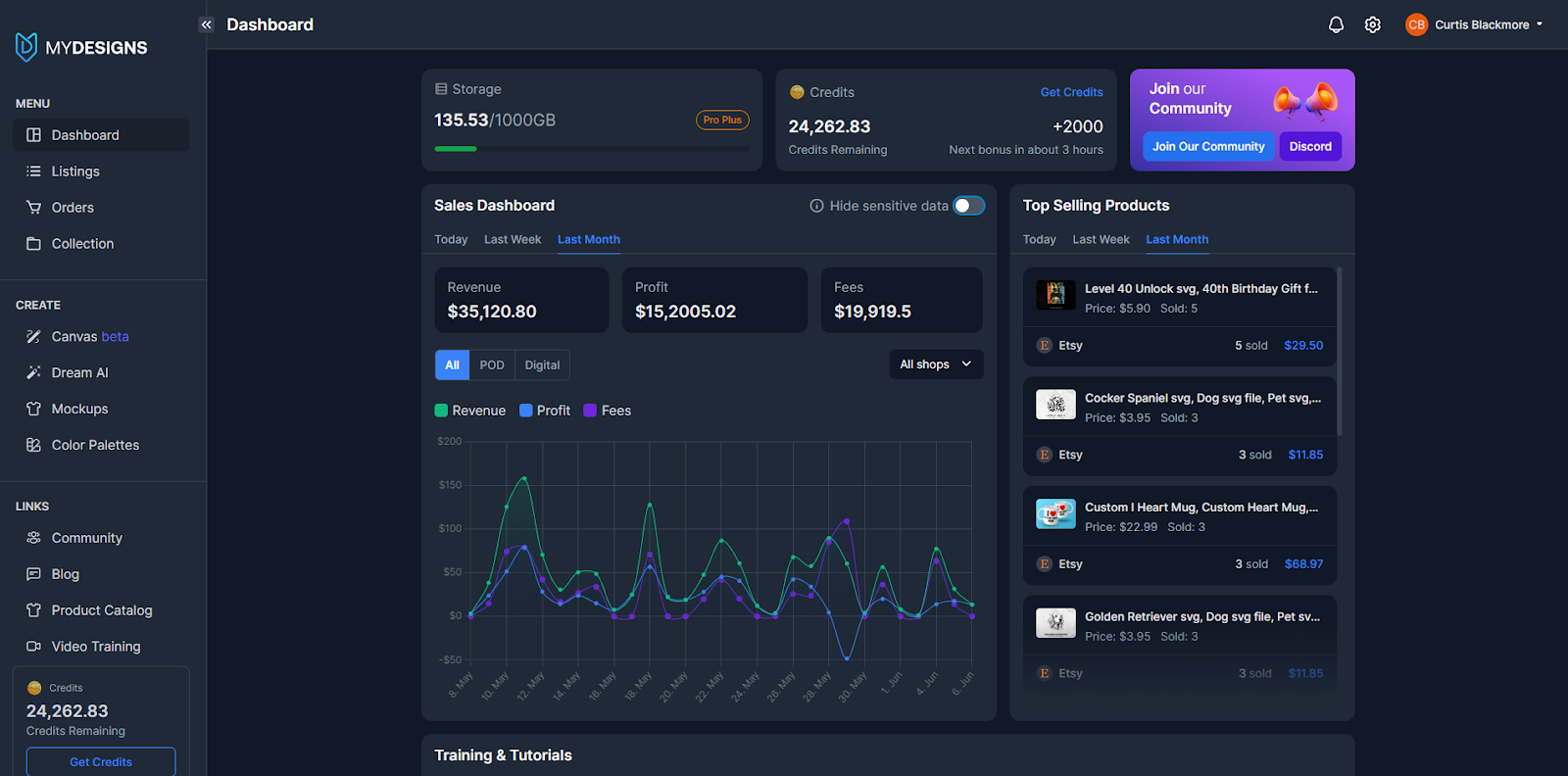 While TikTok’s analytics show you the front-end engagement, you also need to correlate it with the back-end results—sales! This is where MyDesigns’ dashboard can be incredibly helpful. MyDesigns consolidates your product listings and orders across platforms (Etsy, Shopify, TikTok Shop, etc.) in one place. That means you can look at your MyDesigns analytics or order history and quickly see the impact of your TikTok activities. For instance, suppose you dropped a new design on TikTok that links to Etsy. In MyDesigns, you might see that design’s listing got 100 views and 10 sales in the last 24 hours, whereas your other items were steady at their usual pace. That lift can be attributed to the TikTok push.
While TikTok’s analytics show you the front-end engagement, you also need to correlate it with the back-end results—sales! This is where MyDesigns’ dashboard can be incredibly helpful. MyDesigns consolidates your product listings and orders across platforms (Etsy, Shopify, TikTok Shop, etc.) in one place. That means you can look at your MyDesigns analytics or order history and quickly see the impact of your TikTok activities. For instance, suppose you dropped a new design on TikTok that links to Etsy. In MyDesigns, you might see that design’s listing got 100 views and 10 sales in the last 24 hours, whereas your other items were steady at their usual pace. That lift can be attributed to the TikTok push.
If you’re publishing directly to TikTok Shop via MyDesigns, the platform will track those orders too, alongside other channels. You can generate reports or at-a-glance dashboards of what’s selling best. This cross-platform view is super valuable because TikTok might be influencing sales on more than one channel (maybe some people went to your Shopify store, others preferred Etsy).
MyDesigns spares you from checking multiple dashboards separately. Additionally, MyDesigns can help identify trends over time—did your “viral” June lead to higher overall revenue, and which products drove that? If you notice, for example, that digital download sales spiked whenever you used a certain TikTok hashtag or trend, you can plan more of that content. Or if one of your print-on-demand products isn’t moving at all despite TikTok promotion, perhaps it’s time to swap it out for a new design that better fits the trends (which you can create quickly with your integrated tools).
Essentially, MyDesigns closes the loop: TikTok brings the traffic and hype, and MyDesigns captures the sales and customer data. Use it to track conversion rates (views to sales) and even manage customer interactions. If someone from TikTok buys through MyDesigns-linked channels, you have their order info handy to follow up or analyze (like which listing description or tags might have helped them find it).
In short, don’t operate in the dark. By coupling TikTok metrics with MyDesigns sales data, you get a 360 degree view of your funnel. This comprehensive insight lets you celebrate what’s working and pinpoint what’s not, so you can refine your TikTok marketing machine into an efficient, revenue-generating engine.
Common Pitfalls and How to Avoid Them
The TikTok hustle for digital product sales is exciting and rewarding, but it’s not without its pitfalls. As you chase trends and crank out content, there are a few traps that creators commonly fall into. Some are platform-related (like running into music copyright issues), while others are strategic (like overdoing trends to the point of fatigue or losing your brand’s voice).
Copyright-flagged sounds
One day you post a TikTok and wake up to find the audio is muted or the video is taken down—yikes! This often happens when using popular music without the proper rights. TikTok has a vast library of sounds, but not all are free game for business use. Copyright-flagged sounds can derail your video’s success (a silent product demo won’t get far).
To avoid this, stick to TikTok’s Commercial Music Library if you’re a business account. These are tracks cleared for promotional use. If you have a Personal account, you have more music options, but technically using a Personal account for business promotion can risk issues too.
Another angle: some sellers simply avoid the risk by using trending original audio bits—like a viral voiceover or a meme sound created by a user, which usually aren’t subject to the same strict music copyrights. Still, always be cautious; if a sound is suddenly pulled by the original creator or TikTok, your video could lose audio.
Also, avoid the temptation to use famous songs by “cheating” (e.g., playing them in the background); TikTok’s algorithms can detect known tracks. If you do get a video flagged, don’t panic—remove or replace the sound and reupload if necessary. It’s a bummer to lose the engagement, but better than an account strike.
Ultimately, reading up on TikTok’s music guidelines and erring on the side of caution keeps your account healthy. The last thing you want is a trend-perfect video that nobody can hear, or worse, a penalty on your account that limits your reach. So plan your audio wisely, and let music be a boost, not a blocker, to your success.
Trend fatigue and oversaturation
Trends are the currency of TikTok, but even the most exciting trend can become yesterday’s news fast. If you’ve ever scrolled and thought “Not this again…” then you know about trend fatigue. As a creator, it’s important not to wear out your welcome by milking a trend too long or too often. Oversaturation can happen on two levels: platform-wide and on your own profile.
Platform-wide oversaturation is when TikTok’s general audience has moved on from a fad. For example, if the “XYZ Dance Challenge” was hot last month but now people groan when they see it, you don’t want to be the person still trying to ride that wave. To avoid this, keep your ear to the ground – once you notice engagement dropping or see comments like “this trend is dead,” pivot quickly. There’s no shame in aborting a planned post if the trend has clearly peaked.
Now, profile-level oversaturation is another beast: even if a trend is still generally popular, if all you do is that one style of video, your followers might get bored. Variety is key to keeping your audience engaged long-term. Mix trending content with some original or evergreen content so that you’re not a one-trick pony. Also, ensure each time you participate in a trend, you add a fresh spin or new value. Simply copying what dozens of others have done can make viewers tune out. For instance, if a meme format is trending, use it in one video brilliantly related to your product; don’t use the exact same joke format in five consecutive videos.
Another sign of fatigue is when your own excitement wanes—if you’re creating a trend video and it feels forced or like you’re just doing homework, it will likely come across that way on camera. Enthusiasm (or lack of it) is contagious on TikTok. Better to skip or twist a trend than to do it half-heartedly. Remember, trends are a tool, not a crutch. They’re great for spikes of attention, but you build staying power through authenticity and quality. So by all means, play in the trend sandbox, but know when to move to the next playground—there’s always a new one popping up in TikTok-land.
Maintaining brand voice while chasing trends
 In the quest to go viral, many creators make the mistake of losing sight of their brand voice. One day you’re a thoughtful art educator, the next you’re doing slapstick comedy because that’s trending – it might get views, but will it get the right views? The people who followed you for art tips might be confused or turned off by the sudden change in tone.
In the quest to go viral, many creators make the mistake of losing sight of their brand voice. One day you’re a thoughtful art educator, the next you’re doing slapstick comedy because that’s trending – it might get views, but will it get the right views? The people who followed you for art tips might be confused or turned off by the sudden change in tone.
The key is to infuse trends into your brand, not the other way around. Think of your brand voice as your personality – maybe you’re witty and informative, or maybe you’re inspirational and upbeat. Whatever it is, make sure each trend you participate in is adapted to fit that persona.
For example, if a goofy dance is trending and that’s not “you,” perhaps you can still hop on it by making the dance about something in your niche (e.g., dancing with a canvas and paintbrushes if you’re an artist, adding text on screen that delivers a tip or message while doing a simplified version of the dance). That way it’s your style of humor or information layered on the trend. Another tactic: use trending formats as a hook, then quickly pivot in-video to your usual content.
A common example is starting a video like a trend (to get initial interest) and then saying “Okay, now that I have your attention…” and delivering your core message – sometimes creators do this tongue-in-cheek to acknowledge the bait-and-switch, which audiences appreciate if done sparingly. Consistency in branding also applies to visuals and language.
If your brand has certain colors or fonts (say in your captions or thumbnails), keep using them so viewers recognize it’s you while scrolling. Use your logo or a quick intro jingle if appropriate, even within a trend video. It subtly signals, “This fun content is brought to you by me/my brand.” When responding to comments or engaging, stay in voice too – if you’re usually polite and positive, don’t suddenly use snarky comebacks just because it’s a TikTok norm for some.
Ultimately, trends come and go, but your brand might be here for years. It’s important to build a cohesive identity so that when the dust of each trend settles, you have an audience that remembers who you are and what you stand for. Chasing every trend without a filter can make your brand feel erratic or gimmicky. Instead, be the brand that does trends its own way. This builds a loyal following that enjoys how you make things fresh while still delivering the vibe or value they expect from you. They’ll think, “I love this creator’s take on that trend,” rather than, “This creator will do anything for views.” That’s the balance to strike for long-term success.
Conclusion
TikTok isn’t just the latest social media craze—it’s a thriving marketplace where creativity and commerce intersect. By leveraging TikTok trends, you as a digital product creator can unlock levels of reach and engagement that traditional channels struggle to match. We’ve covered how to understand the platform’s explosive growth, spot and predict what’s going viral, and tailor your products and content to fit the fast-moving TikTok culture. Remember, it’s not about chasing every trend blindly, but about syncing the right trend with the right message in your unique brand voice. Short-form video converts like nothing else when you nail the formula: hook early, provide value (or entertainment), and make the path to purchase effortless.
Armed with tools like MyDesigns for design automation and multi-channel publishing, you can respond to trends at lightning speed—creating on-trend designs with Dream AI, bulk-editing images, and rolling out new listings in sync with TikTok buzz. Whether you’re using TikTok Shop for seamless in-app checkouts or funneling viewers to your Etsy or Shopify store, keep the experience quick and user-friendly. And don’t forget the power of collaboration and promotion: partnering with micro-influencers or boosting your best posts with Spark Ads can throw fuel on the fire, bringing waves of new customers to your doorstep.
Finally, stay agile and analytical. Watch your TikTok analytics and your sales data closely; they’ll tell you what’s working. Then, double down on the hits and learn from the misses. TikTok rewards those who learn its language but also bring something fresh to the conversation. As you avoid common pitfalls like copyright issues or trend overload, you’ll find your groove where your content is both wildly engaging and true to your brand.
The landscape of social commerce is always evolving, but one thing is clear: TikTok is here and now, and it’s a golden opportunity for digital product entrepreneurs. So experiment boldly, iterate quickly, and use the tips from this guide to craft your own TikTok success story. Your next viral product could be just a video away. Now get out there and make some TikToks that turn viewers into loyal customers—and have a blast doing it.
Sign up for MyDesigns today to kickstart your TikTok selling journey!
Good luck, and happy trending!



Leave a Reply